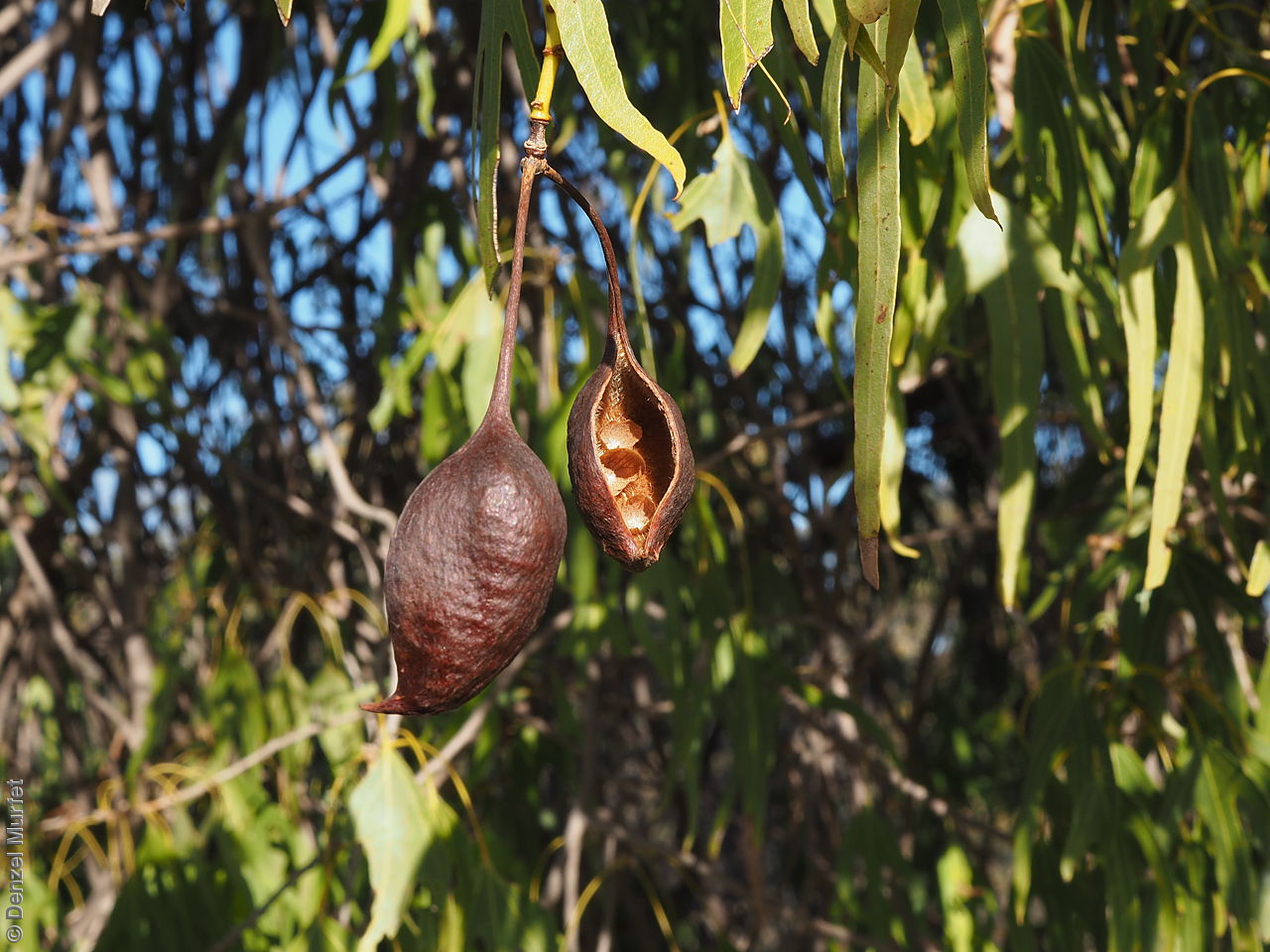











Botanical art
Prior names
Sterculia diversifolia var. (?)occidentalis
Common names
Desert Kurrajong
Ngalta
Etymology
Brachychiton from the Greek 'brachys' meaning short and 'chiton' meaning an outer garment; alluding to the loose outer covering of the seed. Gregorii named after Sir Augustus Charles Gregory (1819-1905), an English-born Australian explorer and surveyor-general.
Distribution and status
Found in the north-west corner of South Australia, growing on sand in sand dunes, rocky ridges & slopes. Also found in Western Australia and the Northern Territory. Native. Uncommon in South Australia. Common in the other States.
Herbarium region: North Western
NRM region: Alinytjara Wilurara
AVH map: SA distribution map (external link)
Plant description
Tall erect tree to 10 m high with evergreen leaves which are shed during dry periods. Leaves to 20 cm long with 3- or 5-lobed, on stalk to 14 cm long. Inflorescences in panicles with pale-yellow bell-shaped flowers with a reddish margins. Flowering between October and December. Fruits are large black pod to 5 cm long, with numerous seeds.
Seed collection and propagation
Collect seeds between December and March. Pods can be collected prior to splitting as long as the seeds inside are hard. Place the pods in a tray and leave to dry until the pods open. Use your hand to dislodge the seeds from the pods. Use a sieve to rub the fruits and to separate the unwanted material. Store the seeds with a dessicant such as dried silica beads or dry rice in an air tight container in a cool and dry place. These seeds have physical dormancy and can be germinated after pre-treatment such as scarification, nicking or hot water. The pre-treatments remove/breach the physical barrier for moisture uptake.